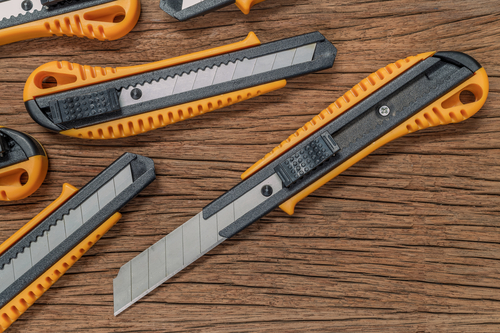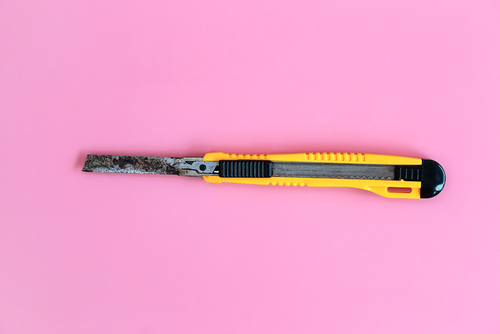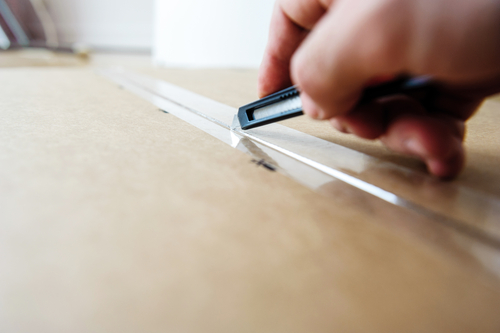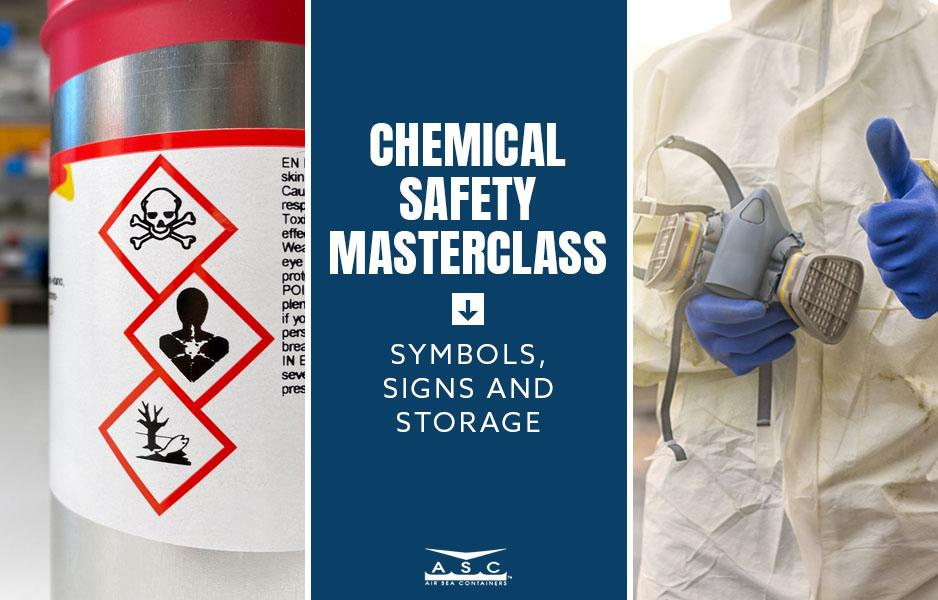A box cutter can be a dangerous work tool because of the sharp blade and the repetition of use. About 30% of workplace injuries involve lacerations, and 70% occur on the hands or fingers. Although convenient, box cutters also pose a safety hazard if misused. So, what are some precautions we can take to help keep ourselves and those around us safe while using box cutters?
Safety Tips to Follow While Using a Box Cutter
1. Shorten the blade.
Retractable box cutters allow for customization of the blade length for a comfortable handling of the box cutter. By keeping the blade short, pressure is applied efficiently onto the item you are cutting while eliminating the off-chance the blade snaps. Snapping of a blade can cause injury.
2. Cut at an angle from your body.
Make sure the movement of the box cutter is not coming directly toward you while slicing an item. Any slip in the cutting movement might cause the box cutter to slide toward your body and cut you. Instead, angle the direction of the blade away from your body so that, in any unforeseen incidents, the box cutter has space to drop or fall next to you and not at you.
Also, always point the blade of the cutter away from you and make sure no one around is in the path of the blade while making cuts with the cutter. In the event a box cutter slips and falls to the floor, do not attempt to catch it. Instead, move away from it as it falls to the ground, and then carefully pick it up off the floor afterward.
3. Retract fully when not in use.
Once finished with using the box knife, always make sure to retract it fully. Retractable box cutters all come with locks at the side to prevent movement of the blade—both when using them as well as when finished using them. Being conscious of retracting and locking the blade once done prevents accidents from occurring if the box cutter is inadvertently misplaced among packing materials or the package contents.

4. Wear gloves.
If possible, always wear cut resistant gloves when handling box cutters. This protects you from any nicks which might occur while making cuts with the cutter. The gloves also provide wearers with a firmer grip, preventing the box cutter from slipping out of your fingers while cutting.
Safety Tips for Maintenance
1. Keep box cutter blades sharp.
Over time, blades become blunt. When that happens, either replace the blade or sharpen it. A blunt blade does not give a clean cut and might need more force exerted on it to make a clean cut. Lucky for you, box cutter blades are easily replaced and affordable.
Some box cutters come with a snap-off blade. Once the tip of the blade is dull, users can snap off a segment of that blade to expose the sharp edge of the next segment. These types of box cutters are easy to use and help make maintenance of your box cutter blades convenient and safe.

2. Change old, dull, and rusty blades.
Not all blades come in stainless steel material, so old blades tend to rust, especially in warm and high humidity climates. When that happens, it is time to switch out the rusty blade or snap off the blade sections. Rusty blades can mark the item you are cutting, especially if the tip has rusted, too, leaving streaks of brown down the sides of your product. Also, rusted blades are no longer sharp, requiring a much stronger force to cut through items. This poses a safety hazard, as using more force on the box cutter compromises the control of the tool.
Accidents that result in lacerations by rusty blades need these to be disinfected and treated right away to prevent an infection of the cut.
3. Keep a first aid kit nearby.
If using a box cutter regularly in your business, keep a fully stocked first aid kit available for use in the event of any accidents, giving your employees quick and easy access to medical attention as and when necessary.
4. Never throw a box cutter.
As with all blades, always pass the box cutter handle first. Never throw a box cutter to a colleague.











